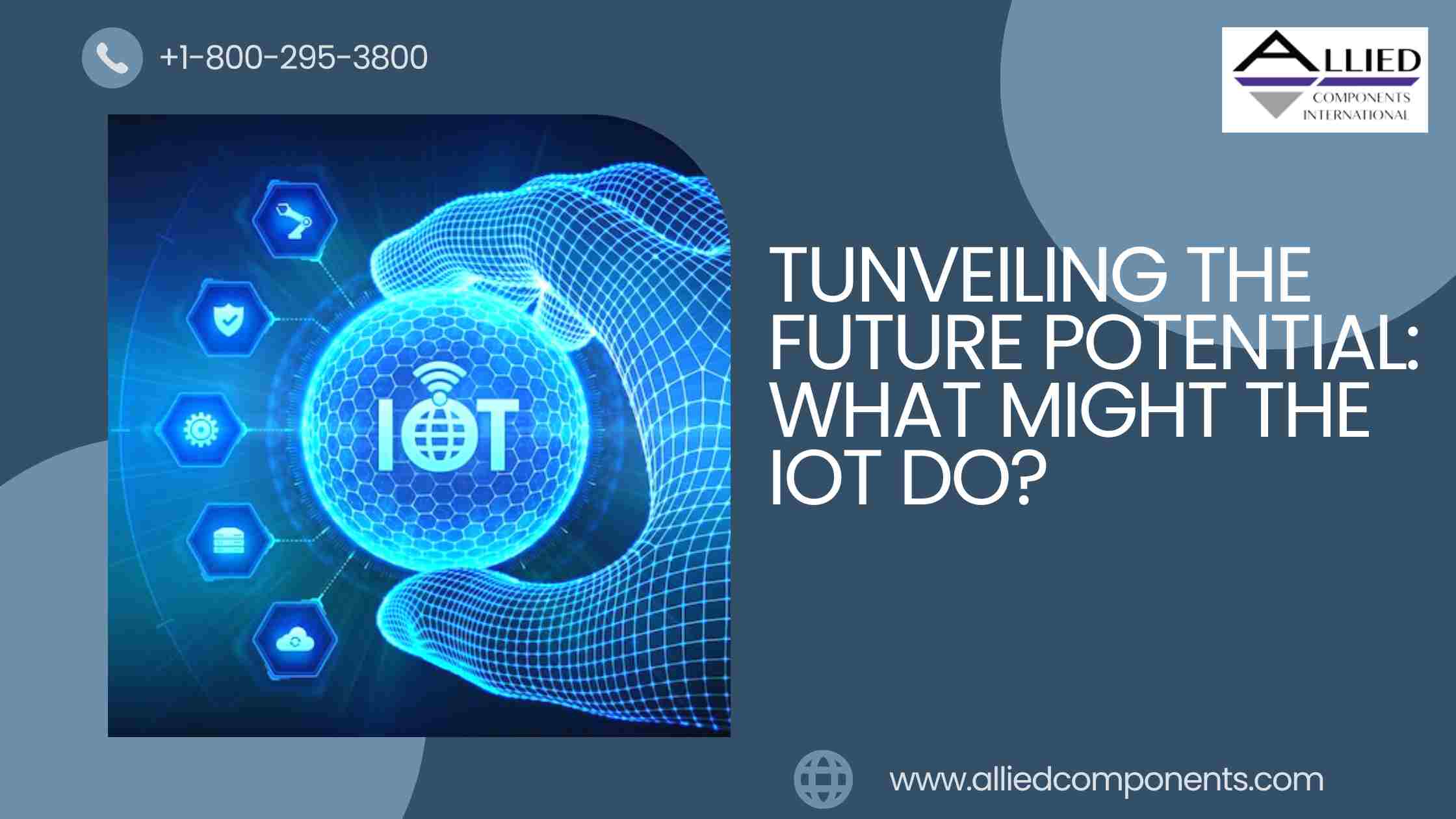Unveiling the Future Potential: What Might the IOT Do?

The COVID-19 pandemic and the rise of virtual interactions have reshaped the world. The consumer electronics market leverages IoT (Internet of Things) to offer innovative solutions. The global consumer Internet of Things market is projected to reach $172 billion by 2030, indicating significant growth ahead. What are some ground-breaking advancements we can anticipate in the IoT and consumer electronics industry? And what might the IoT do in the future? Let's explore the exciting possibilities.
What Is the Internet of Things?
IoT devices are the building blocks of the Internet of Things ecosystem. These devices are embedded with sensors, actuators, and connectivity capabilities, allowing them to collect data, communicate with other devices or systems, and perform specific tasks. They range from small devices like temperature sensors to complex systems like autonomous vehicles or smart city infrastructure.
IoT Devices and Their Capabilities
The world of Internet of Things (IoT) devices continues to expand, offering several interconnected devices with various capabilities. From smart home appliances to industrial sensors, these devices enable seamless communication and automation, revolutionizing our lives. Here are a few capabilities of IoT devices:
- Sensors:
Sensors are a crucial component of IoT devices. They gather data from the physical environment by measuring various parameters such as temperature, humidity, pressure, light, motion, and more. Sensors enable devices to interact with the surrounding environment and provide real-time information for analysis and decision-making. - Actuators:
Actuators are components that enable IoT devices to perform actions based on the data collected. They convert digital signals into physical actions, allowing devices to control physical objects or systems. For example, actuators can turn on/off lights, adjust temperature settings, open/close doors, or control robotic arms. - Connectivity:
IoT devices rely on various connectivity options to transmit and receive data. The choice of connectivity depends on factors such as range, power consumption, data speed, and cost.
IoT Sensors Role in Data Collection
IoT sensors are responsible for capturing data from the physical environment. They detect and measure specific physical phenomena. For instance:
- Environmental Sensors:
These sensors measure temperature, humidity, air quality, and atmospheric pressure. Used in climate control systems, weather monitoring, and indoor air quality management applications. - Motion and Proximity Sensors:
These sensors detect objects or individuals' motion, presence, or proximity. They are commonly used in intelligent buildings' security systems, automatic door opening systems, and occupancy detection. - Light Sensors:
Light sensors measure the intensity of light in their surroundings. They enable automatic display brightness adjustment in mobile devices, outdoor lighting control, and energy-efficient lighting systems.
Exploration of IoT Connectivity Options
IoT devices can leverage various connectivity options based on their requirements. Some standard options include:
- Wi-Fi:
Wi-Fi provides high-speed internet connectivity over a local area network (LAN). It is widely adopted in smart homes, offices, and public spaces where devices require fast data transmission and internet access. - Bluetooth:
Bluetooth is a short-range wireless technology that connects devices nearby. It is commonly used for wearable devices, home automation, and personal area networks. - Cellular Networks:
IoT devices can connect to cellular networks, such as 3G, 4G, or 5G, allowing wide-ranging connectivity. Cellular networks are suitable for devices that require long-range communication, mobility, and continuous connectivity in remote areas. - LPWAN (Low-Power Wide-Area Network):
They offer long-range connectivity with low power consumption. They are suitable for applications that require low-cost, low-bandwidth, and long-range communication, such as smart agriculture, asset tracking, and utility metering.
Also read: Understanding How Digital Signal Processing Works
Impact of IoT on the Electronics Industry
- Revolutionizing Manufacturing Processes:
IoT introduces concepts like smart factories, optimizing production efficiency, fault detection, and predictive maintenance. - Enabling Smart Homes and Connected Appliances:
IoT devices integrate into household appliances, allowing remote control, automation, energy efficiency, and enhanced security. - Enhancing Industrial Automation: IoT sensors provide real-time data on machine performance, inventory, and logistics, optimizing efficiency and coordination.
- Enabling Remote Patient Monitoring:
IoT enables remote monitoring, personalized healthcare, early intervention, and improved collaboration for better patient care. - Energy Efficiency and Sustainability Optimization:
IoT-enabled systems monitor and control energy consumption, enable intelligent energy usage, and promote environmental conservation measures.
Challenges and Opportunities for the Electronics Industry
- Security and Privacy:
Ensuring robust security measures and protecting user privacy are critical for adopting IoT devices. - Interoperability and Standardization:
Developing industry-wide standards to enable seamless communication and interoperability between IoT devices and platforms. - Exploring New Business Models:
Embracing innovative approaches, such as subscription services, data monetization, and value-added offerings, to drive revenue growth in the IoT ecosystem. - Leveraging Machine Learning:
Harnessing the power of data analytics and machine learning to derive valuable insights, optimize operations, and improve decision-making in IoT applications.
Internet of Things (IoT) in the Future
IoT is poised for exponential growth, with billions of connected devices and increased industry integration. Anticipated advancements include edge computing, 5G connectivity, AI integration, enhanced security, and miniaturization. Addressing societal impacts and ethical concerns, such as privacy and job displacement, is crucial. Collaboration and partnerships among industry players, technology providers, and policymakers drive innovation and ensure interoperability.
Final Thoughts
The Internet of Things (IoT) has revolutionized the electronics industry by enabling connection, automation, and data-driven insights. It offers vast opportunities for growth and innovation. However, security, interoperability, and ethical considerations need to be addressed. Collaboration is crucial for a successful and responsible IoT future.
Explore the Future of IoT with Allied Components International
Explore the transformative impact of IoT on the electronics industry and discover the role of customized electronic components at Allied Components International. Our team of experts is available to provide tailored solutions and ensure you have the right components for your IoT applications. Contact us today to schedule a consultation and leverage our expertise in maximizing the potential of IoT in your projects. Experience the future of electronics with Allied Components International.


